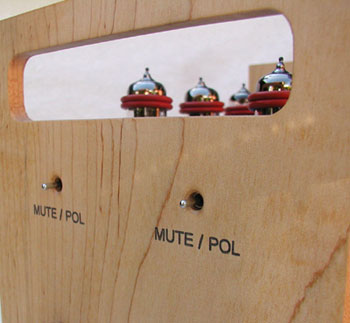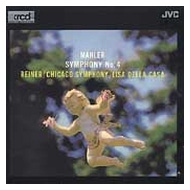You are reading the older HTML site
Positive Feedback ISSUE
12
march/april 2004
hagerman technology
Trumpet phono stage
as reviewed by George C. Valley

GEORGE C. VALLEY'S SYSTEM LOUDSPEAKERS ELECTRONICS SOURCES CABLES ACCESSORIES
|
My involvement with the Hagerman Trumpet phono stage began shortly before Christmas, with a call to Dave Clark in which I reminded him that I hadnít written a PFO review since I tackled the Helikon mono cartridge several months ago. Dave suggested that I listen to the Trumpet and write an addendum to his and Bob Levi's reviews (which I still havenít read, see Hagerman). Phono stages hadnít concerned me for a long time, as I had relied on the internal phono stage of my CAT preamp since I bought it over ten years ago (though it has been upgraded and retubed in the interim). I realize that with the increased emphasis on line stage preamps in the industry, the phono stage is a product whose time has come. Why should those who play CDs, DVDs, SACDs, MP3s, etc., subsidize the LP addictís passion? Listening to pre-RIAA LPs with the Helikon also indicated that alternatives to the RIAA curve are needed in a modern phono stage. So I accepted Daveís offer to review the Trumpet.
The Trumpet didnít fit in my system rack, so was set up on an adjacent table. (Check the dimensions on Hagermanís website if this is a concern.) I disconnected the interconnects and power cable from my CD player and inserted them into the Trumpet. Then I disconnected the Hovland tonearm cable from the Graham arm from the CAT and connected it to the Trumpet, and turned on the Trumpetís left-hand switch for one minute and the right-hand switch for ten seconds, as instructed. Dave also loaned me Hagermanís 18-dB step-up transformer, which I didnít need with my high output moving coil cartridges.
The Trumpet sounded great from the start, so I continued to listen to it in a non-judgmental way for most of the Christmas break. At the highest volume levels (about one click to the left of vertical on the CAT), there was a slight hum that was not present when I switched back to the CAT. I tried various grounding strategies. Both the Merrill Table and the Graham arm have ground wires. Connecting one or both of them to the Trumpet had no effect on the hum. I didnít connect the ground of the Trumpet to that of the CAT, though in retrospect I probably should have. I was tempted to try the step-up transformer, but knew from experience that this much gain would mean that the volume control to the CAT would be at the first click. Most of my listening was done at two clicks to the left of vertical, at which point the hum was inaudible from my listening chair.
After about two weeks, I figured that the Trumpet and I were broken in (the Trumpet was broken in when I got it, but I like to get used to a new component slowly), so I put on some of my favorite LPsóJasha Heifitz, Miles Davis, and Wilhelm Kempf. Since the Helikon mono cartridge was still installed, I started with mono recordings. My DGG recording of Kempf playing Beethoven sonatas was very realistic, with a nice ring to the high notes, nice resonance to the piano, and nice bass. Heifitzí violin (on Saint-Saensí Introduction and Rondo Capricioso Op. 28, RCA LRM 7055, maroon label 10-inch, ca. 1950) sounded beautiful, with sweet high notes. I heard lots of the details of violin sound, and orchestral passages were also detailed without congestionóunusual on a 50-year-old mono LP. The Miles Davis recording (a Classic reissue of Blue Note 5040) had good trumpet sound, with lots of articulation, good bass, and good separation of the instruments.
But what did the Trumpet sound like with "modern," stereo records? I listened carefully to four favorites. First, Miles Davis again, in some cuts from The Complete Plugged Nickel Sessions (Mosaic MQ10-153). Miles sounded so vibrant, like he was right there in front of me. The background noises of this live recording were resolved all around him, but didnít distract. Ron Carterís bass sounded great, the cymbals shone, and Wayne Shorterís saxophone was beautifully rendered. Another "modern" recording I enjoy is Herbert Van Karajanís Beethoven Sixth Symphony on Deutsche Grammophon (tulip label, recorded 1962). The opening oboe was properly distant, the violins shimmered, the double basses were strong, and the woodwinds were very well delineated. The clarinet solo at the end of the first movement was just about perfect.
 On
to Mahlerís Symphony No. 4 with Fritz Reiner and the Chicago
Philharmonic, recorded for RCA by Layton and Moore (LSC 2364), a record I
have listened to a lot. The woodwind solos and duets are exceptionally well
played and recorded, and the Trumpet allowed me to hear the distinctive
character of the soloists. The strings sounded beautiful too, but being a
woodwind player, I tend to key in on individual winds. Finally, I listened
to the second track on the first side of the Britten War Requiem on
Decca/London with Britten conducting. This track is useful, as it requires
huge dynamic and frequency range and the ability to untangle an orchestra, a
separate chamber orchestra, a chorus, and vocal soloists.
On
to Mahlerís Symphony No. 4 with Fritz Reiner and the Chicago
Philharmonic, recorded for RCA by Layton and Moore (LSC 2364), a record I
have listened to a lot. The woodwind solos and duets are exceptionally well
played and recorded, and the Trumpet allowed me to hear the distinctive
character of the soloists. The strings sounded beautiful too, but being a
woodwind player, I tend to key in on individual winds. Finally, I listened
to the second track on the first side of the Britten War Requiem on
Decca/London with Britten conducting. This track is useful, as it requires
huge dynamic and frequency range and the ability to untangle an orchestra, a
separate chamber orchestra, a chorus, and vocal soloists.
Now for the bad news/good news. I switched back to the CAT phono stage, which was so obviously poor in comparison that I asked my wife to listen. She readily agreed, pointing out exactly the same deficiencies I had noted, but she went further. Referring to the CAT phono stage, she said, "I think itís broken." When I mentioned the situation to my friend Vassil, who also has a CAT preamp, he said that testing the CAT tubes seemed like the next logical step. When we tested the tubes, one of them was really bad and the rest were severely unbalanced and less than optimal in output. I therefore bought new tubes, and started to break them in.
In the middle of this process, Dave Clark called and said he needed the Trumpet back, but before I returned it, I was able to perform my detailed listening tests one more time. The Trumpet virtues I have already described were retained with the new tubes in the CAT, and the sound of the CAT phono stage was dramatically improved. It was bright in comparison, though this could readily be attributed to the new tubes. The hum with the Trumpet in the system (and the lack of hum without it) was unchanged, but hum isnít music, and for playing music, the Trumpet was great. George C. Valley
Trumpet phono stage
Retail: $1895
Step-up transformer
Retails: $895
Hagerman Technology
TEL: 808. 383. 2704
email address: [email protected]
web address: www.hagtech.com
